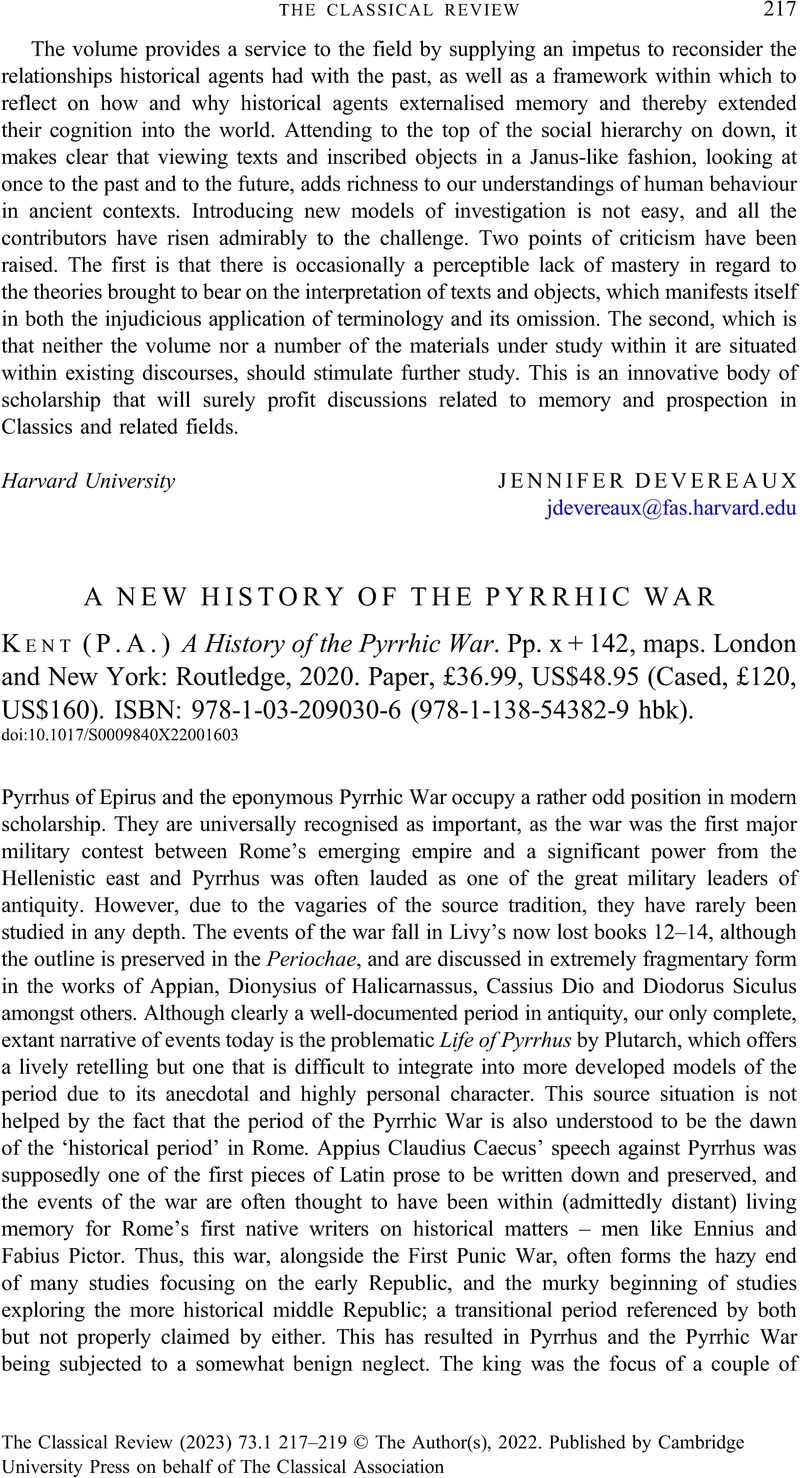No CrossRef data available.
Article contents
A NEW HISTORY OF THE PYRRHIC WAR - (P.A.) Kent A History of the Pyrrhic War. Pp. x + 142, maps. London and New York: Routledge, 2020. Paper, £36.99, US$48.95 (Cased, £120, US$160). ISBN: 978-1-03-209030-6 (978-1-138-54382-9 hbk).
Review products
Published online by Cambridge University Press: 14 July 2022
Abstract

- Type
- Reviews
- Information
- Copyright
- Copyright © The Author(s), 2022. Published by Cambridge University Press on behalf of The Classical Association



